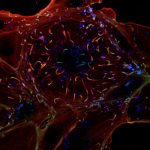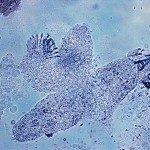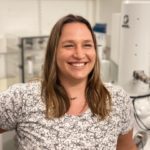A Master 2 position is available for a project starting in anuary 2025 (M2 students registered for the academic year 2024-25).
Protein trafficking is a hallmark of eukaryotic cells. The most spectacular one is the movement of protein complexes driven by molecular motor along microtubules. A central unanswered question is how do motors select microtubules for initiating movement. This can be compared to trains searching for appropriate tracks for trafficking.
Our team is investigating this process using the flagellum trypanosome as model system. We have shown that trains traffic on a defined number of microtubules (Bertiaux et al. 2018). The aim of the project will be to decipher how trains select particular microtubules for trafficking using a combination of reverse genetics (RNAi, CRISPR-Cas9, gene deletion) and imaging technologies (live imaging of protein trafficking, expansion microscopy, electron microscopy).
This multidisciplinary project is a collaboration between the Trypanosome Cell Biology Unit (P. Bastin) and the Ultrastructural Bioimaging Unit (A. Mallet) of the Institut Pasteur.
Interested? You can contact us by email (link on top this page)

References:
Mallet, A., and Bastin, P. (2022). Restriction of intraflagellar transport to some microtubule doublets: An opportunity for cilia diversification? Bioessays 44, e2200031. Front cover.
Bertiaux, E., Mallet, A., Rotureau, B., and Bastin, P. (2020). Intraflagellar transport during assembly of flagella of different length in Trypanosoma brucei isolated from tsetse flies. J Cell Sci 133, jcs248989.
Bertiaux, E., Morga, B., Blisnick, T., Rotureau, B., and Bastin, P. (2018). A Grow-and-Lock Model for the Control of Flagellum Length in Trypanosomes. Curr Biol 28, 3802-3814 e3803.
Bertiaux, E., Mallet, A., Fort, C., Blisnick, T., Bonnefoy, S., Jung, J., Lemos, M., Marco, S., Vaughan, S., Trepout, S., Tinevez, J.Y., and Bastin, P. (2018). Bidirectional intraflagellar transport is restricted to two sets of microtubule doublets in the trypanosome flagellum. J Cell Biol 217, 4284-4297.





